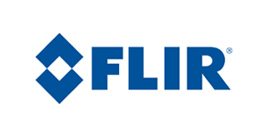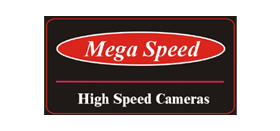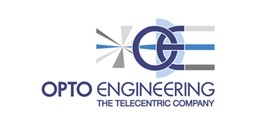Motion analyses are most commonly used for sports motor skills. The primary task here is to study, train and optimize motion sequences. This applies to both individual and team sports as well as sports that involve the use of equipment or animals.
The applications are multifaceted. Wit the help of slow motion studies swimmers seek to optimize their butterfly stroke after the turn, horse and rider train to achieve a harmonious riding style and athletes improve their long jump.
Motion analysis is also used in the development and testing of sports equipment and gear. The high-speed video to the right shows a golf stroke that was captured using the MotionBLITZ EoSens® mini1 high-speed camera. This high-speed recording aimed to optimally adapt the club to the player’s movements.
The club head can reach speeds of up to 200 km/h. To capture all the details, a sufficiently high frame rate must be used. This recording was taken at a frame rate of 2,009 frames per second and a resolution of 528 x 518 pixels. A case study explains how swing analysis can be put to good use when equipping golfers.
Motion analysis is also often used in medicine, particularly in the field of rehabilitation: Doctors and other medical professionals seek to visualize motion or gait disorders in order to develop targeted therapies. High-speed imaging helps them to develop individual training plans, to adjust and optimize aids such as insoles, orthotics and prosthetics and to assess the chances of successful orthopedic surgery.
Finding the Right Camera for Every Motion Analysis
At the heart of every motion laboratory is the high-speed camera. Often, multiple synchronously running cameras are used for three-dimensional analyses. To achieve the best results, there are some important points to be considered when selecting the camera. The decisive parameters are the frame rates, resolution and recording times that will be required. Other important criteria include the handling and ease of integration of the high-speed camera.
High Frame Rates
The required frame rate is determined based on the requirements of the motion to be analyzed. A gait analysis, for example, requires a lower frame rate than the analysis of the forehand stop in tennis. Motions in competitive sports are often especially fast. To analyze these processes in sufficient detail, the high-speed camera used must have a high frame rate of at least 500 pictures per second.
The high-speed recording on the left shows the golf club head at impact. This is the critical moment for the analysis, the moment of the impact. It determines the ball’s takeoff velocity, direction of flight and spin. Here, the small image region meant the resolution could be reduced to 832 x 172 pixels. This allowed the MotionBLITZ EoSens®mini1 to reach a frame rate of 4,188 frames per second.
High-Precision Resolution
Resolution is crucial for the sharpness and the detail level of the recordings. This also depends on the specific requirements: For example, to achieve the same level of detailed sharpness, high-speed recordings of lower limb prostheses require a higher resolution than the images of prosthetic feet.
The slow-motion sequence to the left was recording using the MotionBLITZ EoSens® Cube6. With a pixel resolution of 1,280 x 1,024 the camera delivered 150 frames per second. The video shows a jetski driver performing a bootleg turn.
The MotionBLITZ EoSens® mini2 offers a resolution of 1,696 x 1,710 pixels; thus, it delivers extremely sharp images at maximum recording speeds of 523 frames per second. Here, the resolution is proportional to the recording speed.
The Right Recording Time
Since the entire motion process must be stored in the camera’s memory, the recording time is another important criterion when selecting the camera. For example, there are different requirements depending on whether you are recording a complete obstacle course run or only the start of it. In general, the camera should follow the defined test protocol – and not vice versa; the camera should not affect or even define the test sequence.
Memory cameras offer recording times between 2 seconds and a maximum of 15 seconds. The MotionBLITZ® Cube records at full resolution and speed for up to 13 seconds. For a longer recording time, the frame rate and/or resolution can be reduced. For example, for a recording time of 30 seconds, a resolution of 100 x 800 pixels and a frame rate of 300 frames per second can be set. If longer recording times are required, Mikrotron offers long-time recording systems that can record from several minutes up to a few hours.
This underwater video shows a diver during immersion. Having the right position is crucial: The diver should dive perpendicularly into the water and no longer be in the final stages of a turn. The video was taken with the MotionBLITZ EoSens® Cube6 at a frame rate of 718 frames per second and a resolution of 1,280 x 720 pixels. These settings allowed a recording time of 3.25 seconds. The camera was operated by hand.
Compact Handling
When selecting the right camera, the performance characteristics are of foremost importance. However, the design may also be an important criterion: overly large high-speed cameras can be more difficult to handle and reduce the usability, especially when space for the camera is limited. At the same time, the size of the camera is a characteristic that often only becomes apparent in the field: For example, if you want to record each part of a pole vault sequence on a training field, you need a fast and flexible high-speed camera. Confusing cables or unwieldy devices make it difficult to concentrate on the task at hand and should therefore be avoided. Mikrotron offers compact systems with ideal sizes of 65 x 65 x 65 mm to 200 x 200 x 350 mm.
The high-speed video on the left shows a high jumper at the critical point of take-off. During the jump, the jumper must convert the horizontal velocity into vertical velocity and initiate the turn to cross the bar. The image sequence was created within 1 ¾ seconds and consists of a total of 1,764 images. The images were taken with the MotionBLITZ® Cube1 at a resolution of 640 x 512 pixels. Thanks to the compact size, flexible use in the field is also possible.
The high-speed Cube and eosens TS3 cameras by MIKROTRON can also operate completely selfsufficiently, without an external power supply, and run on battery power for up to one hour. In addition, the cameras have an internal SSD memory, where all data can be stored for final analysis. For example, the eosens TS3 can record without being connected to a computer for up to 13 seconds at full recording resolution and speed.
The software included in the delivery allows for easy use of the cameras. It will win you over with its well-executed and intuitive workflows, easily recognizable features and easy-to-use elements. It also offers the option to synchronize multiple cameras so that they can record at the same time. The software can be easily installed and operated on all computers – special hardware is not required.
A Range of Interfaces
MIKROTRON high-speed cameras are supplied with a C- or F-Mount lens connection. The C-Mount can be adapted to the greatest range of systems, including special optical systems such as endoscopes or telecentric lenses. F-Mount lenses also offer a particularly good imaging quality at focal lengths of over 50 mm. Open interfaces on the cameras allow users to select their own optical systems. For example, camera lenses, zoom lenses and microscopes can be connected without problems. Moreover, all MIKROTRON cameras are equipped with a trigger input. This means you do not have to stand next to the camera to start the recording – it can be easily started with a trigger. In addition, the models have interfaces that facilitate a parallel recording of analogue and digital signals.
An Extensive Portfolio
When choosing the right camera for the high-speed imaging of movements, several parameters play a crucial role. This includes the frame rate, resolution, and recording time, but also the handling, us ility and flexibility of the camera. It is equally important to consider the specific demands of each task. MIKROTRON’s product portfolio offers different options depending on the specific parameters and thus offers a suitable solution for each task.
To Know More About To Know More About Mikrotron High Speed Cameras in Mumbai, Singapore , Contact MVAsia Infomatrix Pte Ltd at +65 6329-6431 or Email us at info@mvasiaonline.com
Source - mikrotron.de






























